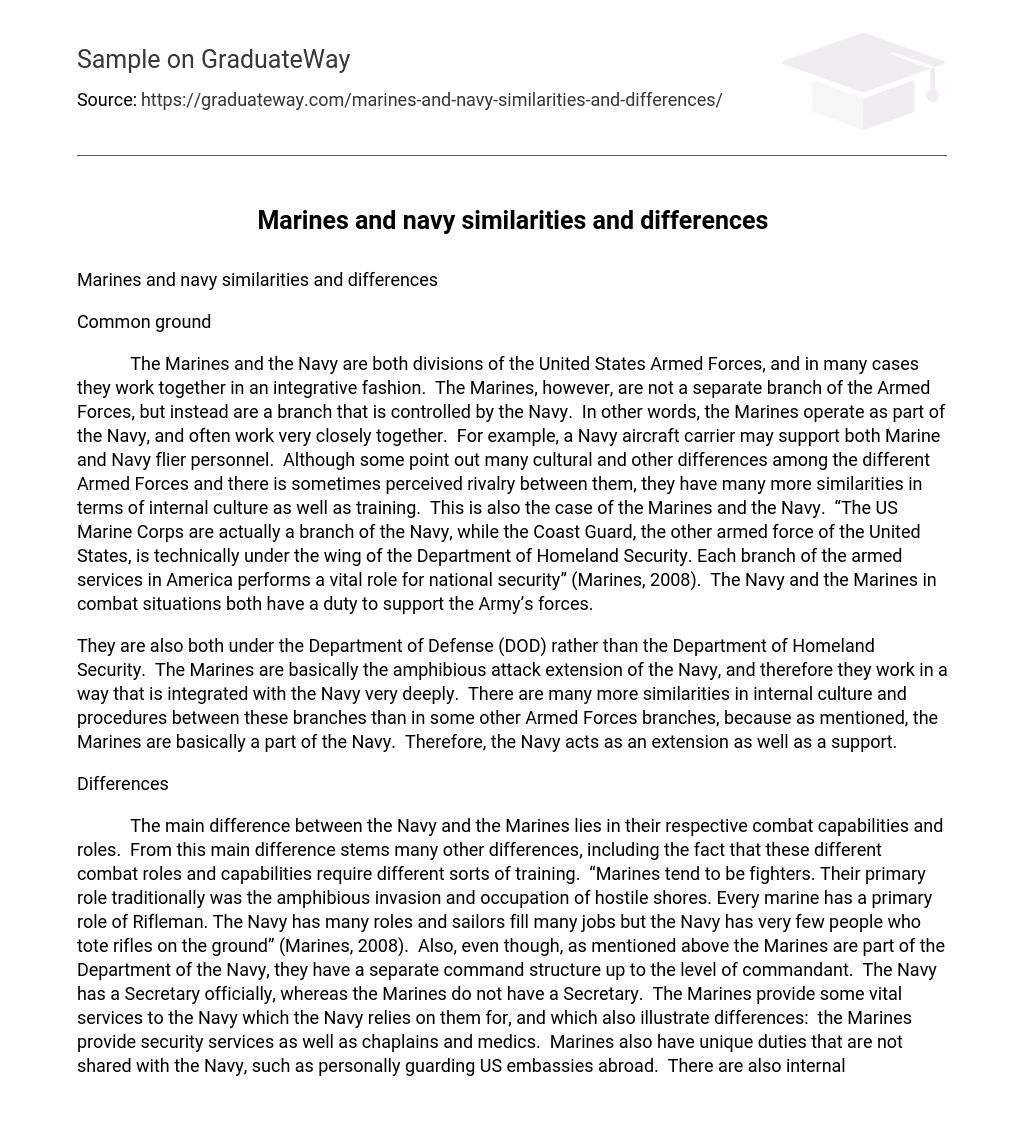Common ground
The Marines and the Navy are both divisions of the United States Armed Forces, and in many cases they work together in an integrative fashion. The Marines, however, are not a separate branch of the Armed Forces, but instead are a branch that is controlled by the Navy. In other words, the Marines operate as part of the Navy, and often work very closely together. For example, a Navy aircraft carrier may support both Marine and Navy flier personnel. Although some point out many cultural and other differences among the different Armed Forces and there is sometimes perceived rivalry between them, they have many more similarities in terms of internal culture as well as training. This is also the case of the Marines and the Navy. “The US Marine Corps are actually a branch of the Navy, while the Coast Guard, the other armed force of the United States, is technically under the wing of the Department of Homeland Security. Each branch of the armed services in America performs a vital role for national security” (Marines, 2008). The Navy and the Marines in combat situations both have a duty to support the Army’s forces.
They are also both under the Department of Defense (DOD) rather than the Department of Homeland Security. The Marines are basically the amphibious attack extension of the Navy, and therefore they work in a way that is integrated with the Navy very deeply. There are many more similarities in internal culture and procedures between these branches than in some other Armed Forces branches, because as mentioned, the Marines are basically a part of the Navy. Therefore, the Navy acts as an extension as well as a support.
Differences
The main difference between the Navy and the Marines lies in their respective combat capabilities and roles. From this main difference stems many other differences, including the fact that these different combat roles and capabilities require different sorts of training. “Marines tend to be fighters. Their primary role traditionally was the amphibious invasion and occupation of hostile shores. Every marine has a primary role of Rifleman. The Navy has many roles and sailors fill many jobs but the Navy has very few people who tote rifles on the ground” (Marines, 2008). Also, even though, as mentioned above the Marines are part of the Department of the Navy, they have a separate command structure up to the level of commandant. The Navy has a Secretary officially, whereas the Marines do not have a Secretary. The Marines provide some vital services to the Navy which the Navy relies on them for, and which also illustrate differences: the Marines provide security services as well as chaplains and medics. Marines also have unique duties that are not shared with the Navy, such as personally guarding US embassies abroad. There are also internal cultural differences between the Marines and the Navy, which tend to differ with individuals and involve stereotypes and a sort of friendly rivalry that they have with each other: Marine Corps individuals may stereotype Navy personnel as being out of shape compared to them, because of their support role, whereas Navy personnel may stereotype Marines as being less adept at technological matters.
REFERENCE
Marines vs. Navy—What is the difference (2008). http://www.wisegeek.com/what-is-
the-difference-between-the-us-army-and-the-us-marines.htm.





